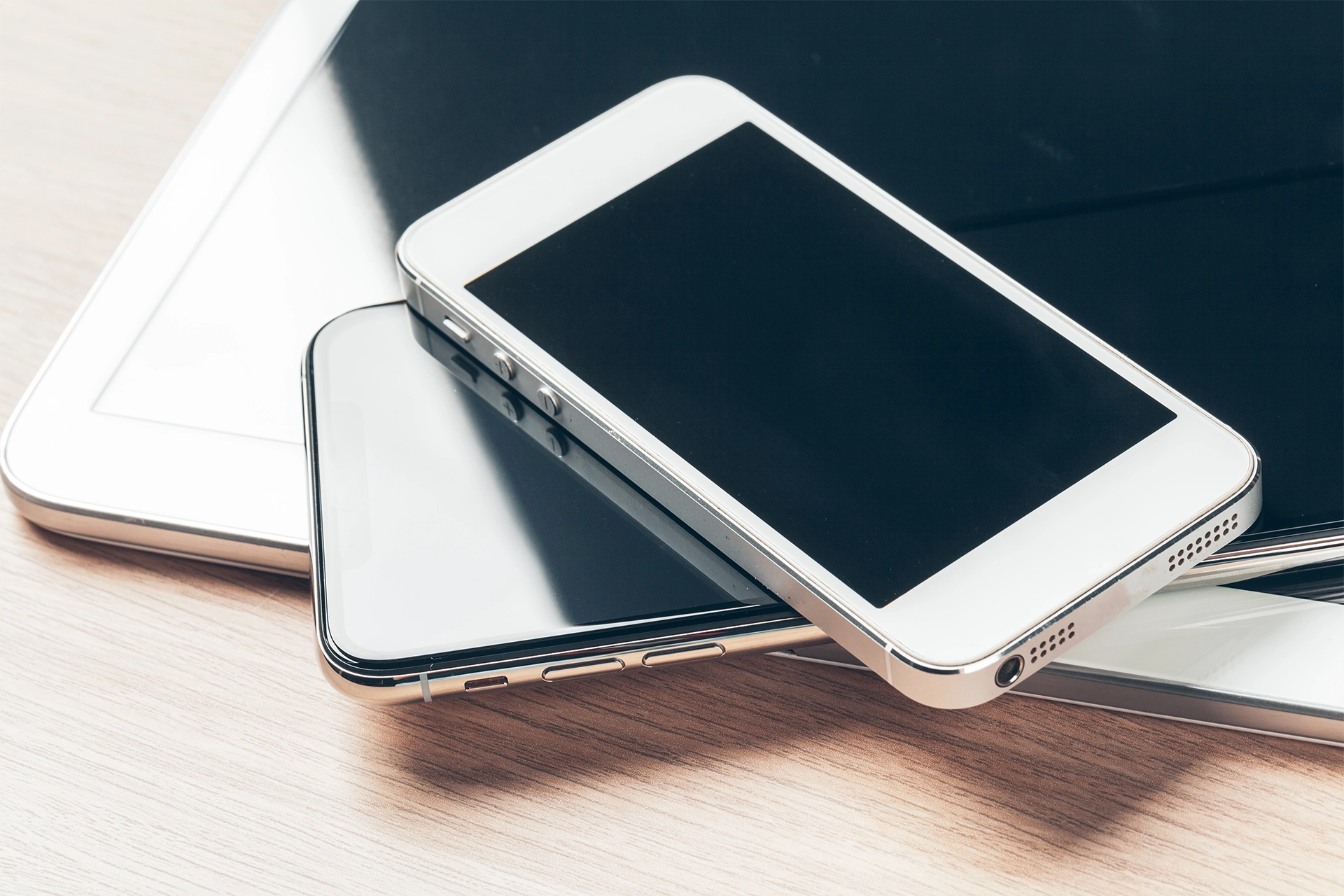Will new, cheaper and more environmentally friendly touchscreen materials emerge? Researchers from the Łukasiewicz Institute of Microelectronics and Photonics, the Faculty of Physics at the University of Warsaw and the Karlsruhe Institut für Technologie are launching an ambitious project. They will be developing new materials that may replace the indium tin oxide (ITO) currently used in most touchscreen devices. The project received funding from the National Science Centre under the Opus programme.
Transparent electrodes are found in every touchscreen device. The newly developed materials are expected to retain the valuable properties of ITO, such as high transparency and electrical conductivity. The electrodes must not only be transparent so that users can see the image on the screen, but also electrically conductive to effectively register touch. Transparency is crucial for image brightness and clarity, while conductivity is essential for fast and accurate recording of user touch.
Looking for an Alternative
The project is headed by dr hab. Michał Borysiewicz of Łukasiewicz – MiF. The research will focus on the development of transparent and conductive materials with a new nanostructure, namely metal (M) nanoparticles in an amorphous silicon oxide (SiO2) matrix, designated M-Si-O. So far, they have been investigated and used as barriers to prevent metal diffusion in electrical contact structures for high-power instruments. This stability results from the presence of silicon oxide, which is a material that is stable even at elevated temperatures resulting from the high current intensities found in such devices. Unfortunately, only M-Si-O materials containing precious metals such as ruthenium or iridium are currently known, which translates into a high cost of their production. Theoretical predictions also point to the possibility of producing M-Si-O materials with more common – i.e. cheaper – metals, which is something the researchers will pursue.
The structure of the project team will enable extensive work. These will include modelling potential metal ‘candidates’ that can be used in M-Si-O materials. This will be followed by the synthesis of new M-Si-O materials from the identified ‘candidates’, the study of their structural and chemical properties to understand their formation mechanisms, and the description of their electrical transport properties.
These activities will allow the generation of a generalised description of the M-Si-O group and the formulation of rules for the selection of elements for the production of M-Si-O materials with specific properties up to the development of an optimal model of materials of this type.
- Thanks to the magnetron cathode sputtering technique we specialise in, we can create thin films of complex materials without having to synthesise nanoparticles and mix them with SiO2. Until now, this has been a very complicated and lengthy process. It will now be significantly simplified.
Michał Borysiewicz, Lider obszaru materiałów porowatych, Grupa Badawcza Materiały dla Energetyki Łukasiewicz – MiF
Importantly, the microstructure of the new materials will be imaged using atomic probe tomography (APT). This method enables the production of three-dimensional images of the interior of a material with atomic resolution and is indispensable for understanding the properties of materials such as M-Si-O, in which the matrix of the material contains nanoparticles of another material. A thorough description of the nanoparticles surface will allow for the development of a realistic description of current flow mechanisms in M-Si-O materials.
As the materials studied are conductive and their structure is very unusual, the project will conduct advanced measurements of electron transport properties. The activities will be led by dr hab. Marta Gryglas-Borysiewicz from the Faculty of Physics of the University of Warsaw, an expert in measuring the transport of ‘difficult’ materials. The results of the structural and transport studies will contribute to the computational work being carried out by prof. Jacek Majewski from the Department of Physics of the University of Warsaw. Their aim is to determine the transport mechanism both within the material itself and through the M-Si-O/semiconductor, which is crucial for the use of these materials as transparent electrodes.
More Than Just Technology – Ethics and Ecology
Indium-tin oxide is a standard material used in touchscreens today, but its production raises ethical and environmental issues related to indium mining. Therefore, we are looking for cheaper and less problematic metals that could replace indium in transparent electrodes in touchscreens thanks to nanotechnology. An important motivation for undertaking the project is, in addition to the desire to develop new technologies, the social and environmental dimension of the indium mining.
- We want to create a material that is not only more efficient, but also more socially responsible and environmentally friendly. Transparent electrodes are indispensable in any touchscreen device and our research has the potential to significantly impact the industry as a whole. I think this aspect was also appreciated by the reviewers. Indeed, our project was the only one from the Łukasiewicz Research Network selected for funding in the Opus 25 competition.
Michał Borysiewicz, Lider obszaru materiałów porowatych, Grupa Badawcza Materiały dla Energetyki Łukasiewicz – MiF
